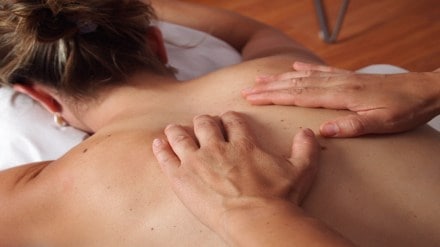Bacne, or back acne, is a common yet frustrating skin condition that affects people of all ages. It occurs when the skin on your back develops clogged pores, inflammation, or bacterial overgrowth. While it may seem similar to facial acne, bacne has unique triggers due to the anatomy and environment of the back.
According to Dr. Neha Sharma, Dermatologist, Estique Skin & Hair Clinic, your back has a high density of sebaceous (oil-producing) glands, making it prone to excess oil production. Combined with sweat, dead skin cells, and friction, this can create the perfect breeding ground for acne-causing bacteria, such as Cutibacterium acnes.
What are the main causes of bacne?
- Excess Sebum Production: Hormonal imbalances, especially during puberty, menstruation, or stress, can lead to an overproduction of sebum. This excess oil clogs pores, trapping bacteria and leading to inflammation.
- Sweat and Heat: Prolonged sweating, especially after workouts, can mix with oil and dead skin, clogging pores. Tight clothing or backpacks can exacerbate this by trapping heat and moisture.
- Friction and Pressure: Continuous friction from tight-fitting clothes, sports gear, or heavy bags can irritate the skin, leading to breakouts.
- Improper Hygiene: Using hair products that drip onto your back or not washing the back thoroughly can leave residues that clog pores.
- Dietary Factors: High glycemic foods, dairy products, or an unbalanced diet can increase inflammation and acne risk.
- Genetics: A family history of acne makes you more prone to bacne.
- Underlying Medical Conditions: Conditions like Polycystic Ovary Syndrome (PCOS) or certain medications can trigger acne on the back.
How to prevent bacne?
You can take the following step to prevent bacne:
- Shower after sweating: Cleanse your back immediately after exercising to prevent sweat buildup. Use a gentle cleanser with salicylic acid or benzoyl peroxide for added acne control.
- Exfoliate Regularly: Use chemical exfoliants like beta-hydroxy acids (BHAs) to remove dead skin cells and unclog pores. Avoid harsh scrubbing, which can worsen irritation.
- Wear Breathable Fabrics: Opt for loose, moisture-wicking clothing, especially during physical activity.
- Change Your Diet: Reduce high-sugar and dairy intake, and incorporate anti-inflammatory foods like omega-3 fatty acids.
- Use Non-Comedogenic Products: Choose skincare and haircare products labeled “non-comedogenic” to avoid pore-clogging residues.
- Avoid Picking or Squeezing: Picking bacne can lead to scarring and further inflammation.
“Bacne, while frustrating, is easily manageable with the right care and treatment. By understanding its causes and adopting preventive measures, you can take control. If you’re struggling with bacne, don’t hesitate to reach out to a dermatologist,” Dr. Sharma told Financial Express.com.
